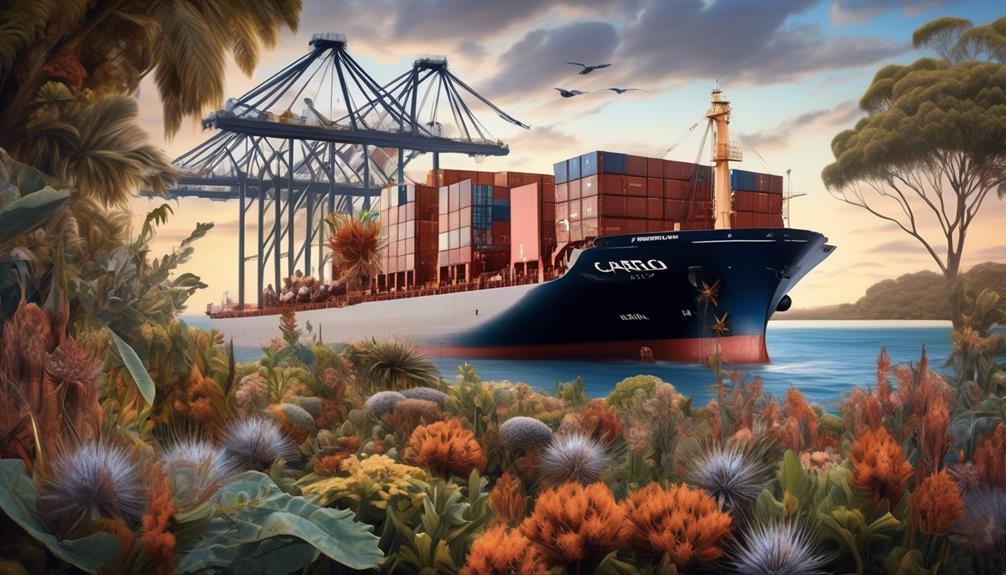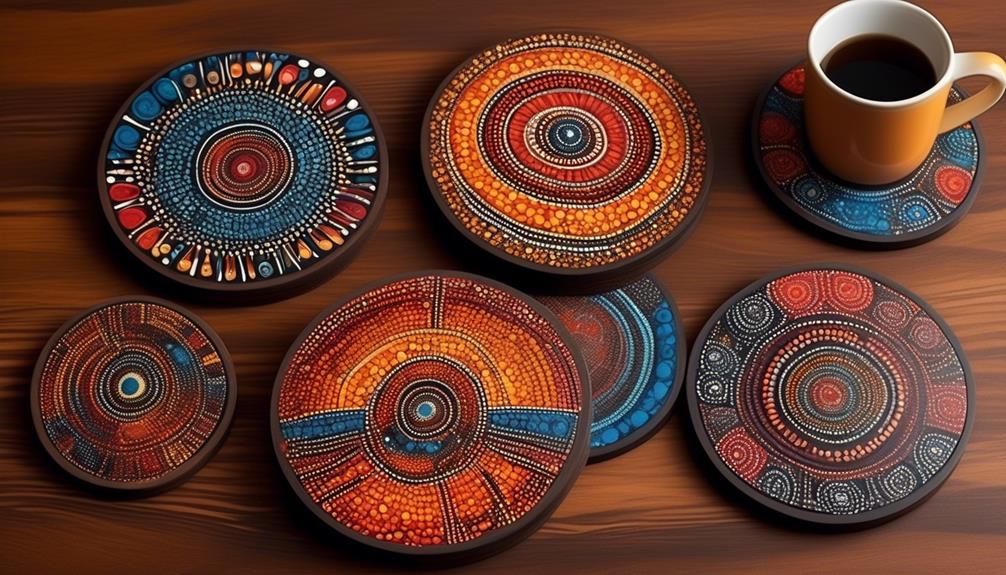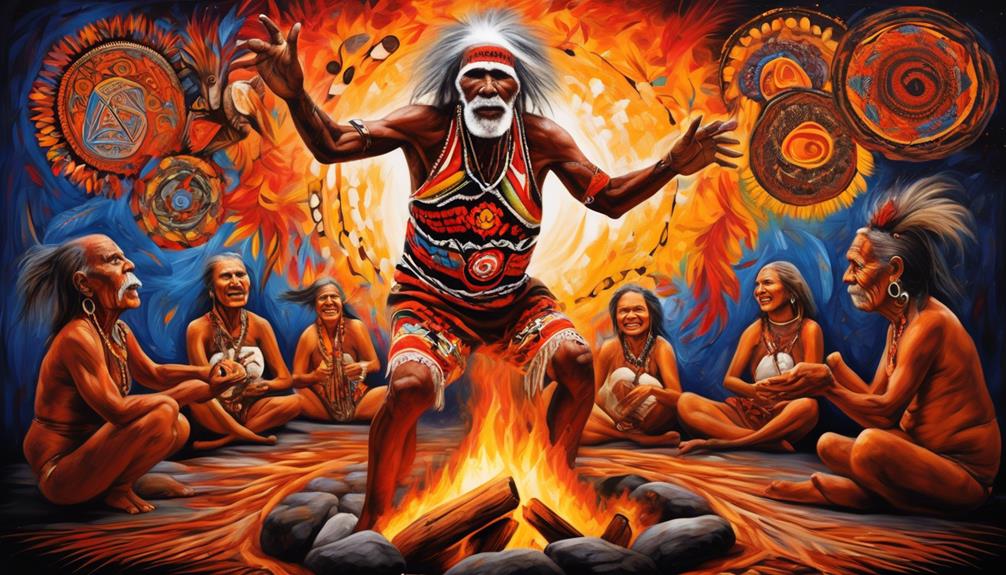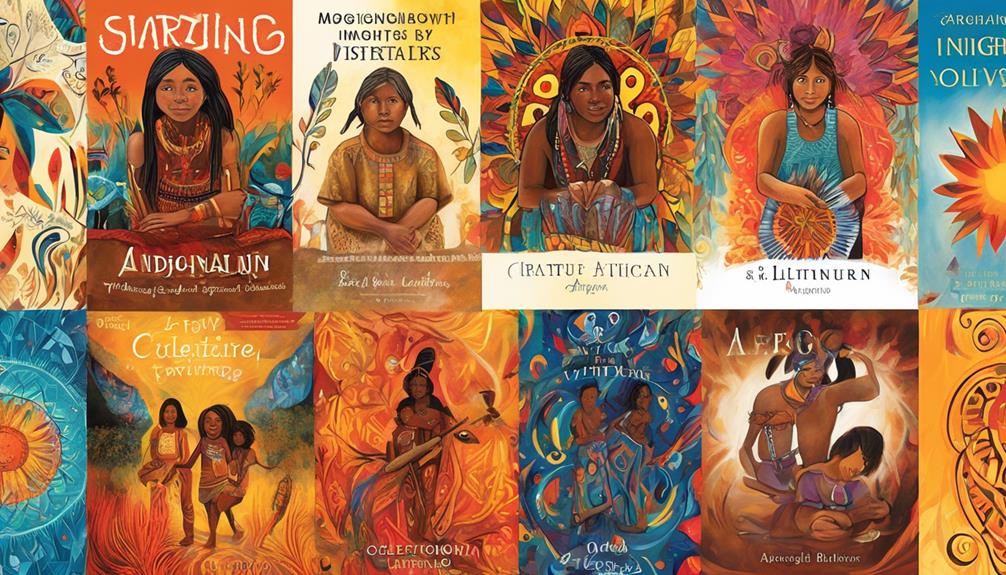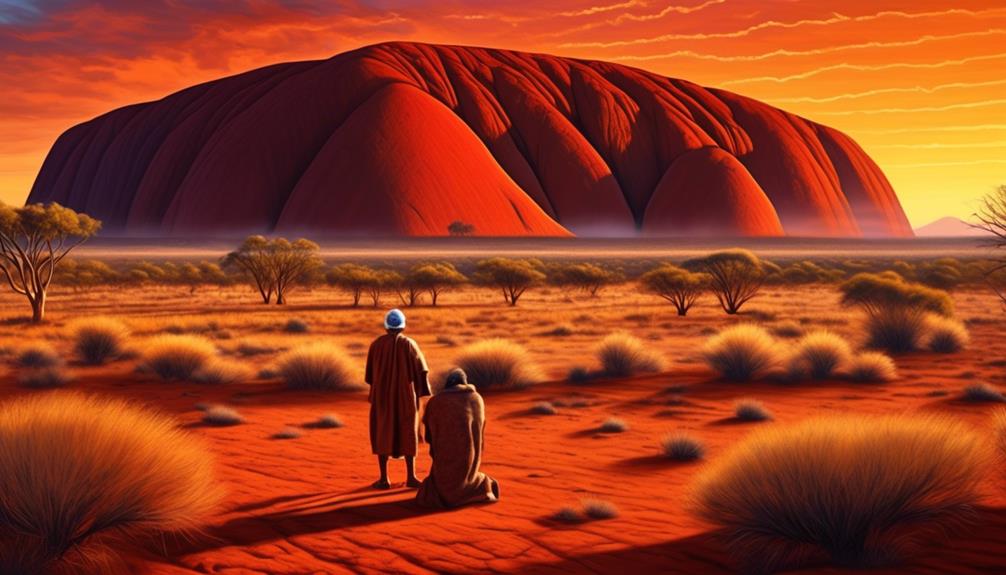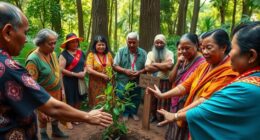As we set sail on a voyage exploring Australia’s rich maritime history, we uncover a intricate web of indigenous navigation techniques that showcase a blend of cultural perseverance and innovation.
The knowledge and skills possessed by the indigenous peoples of Australia in the realm of maritime navigation and watercraft construction are as diverse and rich as the colors of a sunset over the ocean.
Exploring the depths of these ancient practices not only offers a compelling glimpse into the past, but also provides invaluable insights that continue to shape our understanding of Australian maritime heritage.
Key Takeaways
- Native shipping in Australia encompasses a diverse array of watercraft designs that were crafted using locally available materials and traditional techniques.
- These watercraft held significant cultural and symbolic value for indigenous peoples and played a crucial role in shaping their way of life. They go beyond transportation and embody history, traditions, and values.
- Native shipping in Australia facilitated trade networks, enabling the exchange of goods and cultural practices, as well as communication and interaction between communities. It also played a role in the development of regional economies and showcased the interconnectedness of indigenous cultures.
- Indigenous navigators in Australia mastered celestial navigation techniques, using stars, sun, moon, and planets to determine position and direction. They developed sophisticated wayfinding techniques using natural signs and traditional tools like stick charts and navigational charts.
Indigenous Watercraft: A Historical Overview
Throughout history, indigenous peoples around the world have crafted and utilized a diverse array of watercraft for transportation, trade, and cultural practices. When exploring the historical vessels of indigenous cultures, it becomes evident that these watercraft weren't only essential for maritime transportation but also held significant cultural and symbolic value.
The maritime heritage of indigenous peoples is rich and varied, with each community developing distinct vessel designs suited to their specific environmental and navigational needs.
These historical vessels were crafted using locally available materials and traditional techniques, showcasing the ingenuity and resourcefulness of indigenous communities. From the sturdy kayaks of the Inuit people to the intricately carved outrigger canoes of the Pacific Islanders, these watercraft played a crucial role in shaping the way of life for indigenous peoples.
Furthermore, these vessels were integral to trade networks, enabling the exchange of goods and cultural practices across vast distances.
Studying the historical vessels of indigenous cultures provides valuable insights into the maritime heritage of these communities, offering a deeper understanding of their seafaring traditions and technological innovations. By preserving and celebrating these maritime legacies, we honor the enduring contributions of indigenous peoples to the world of watercraft and maritime exploration.
Traditional Navigation Techniques and Tools

Exploring indigenous maritime traditions reveals the ingenuity and precision of their traditional navigation techniques and tools. Indigenous seafarers mastered the art of celestial navigation, using the stars, sun, moon, and planets to determine their position and direction at sea. This remarkable skill allowed them to undertake long and arduous voyages across vast oceanic expanses with astonishing accuracy.
- Celestial Navigation: Indigenous navigators honed their ability to interpret celestial bodies' positions and movements to plot their course across the open ocean.
- Star Charts: Elaborate charts were created to record the positions of stars and their significance in navigation, passing down crucial knowledge from one generation to the next.
- Wayfinding Techniques: Indigenous seafarers developed sophisticated wayfinding techniques to interpret natural signs such as ocean swells, cloud formations, and bird migrations to aid in navigation.
- Tools of Navigation: Traditional tools, such as the Marshall Islands stick charts and Micronesian navigational charts, were indispensable for plotting routes through the Pacific Ocean, showcasing the advanced navigational expertise of indigenous cultures.
Significance of Native Shipping in Australian Culture
Indigenous maritime traditions in Australia showcase a deep-rooted connection to the sea, with native shipping playing a pivotal role in shaping the cultural identity of the continent. The significance of native shipping in Australian culture can't be overstated. It goes beyond just a mode of transportation; it embodies the rich history, traditions, and values of the indigenous peoples. The vessels and techniques used for native shipping are deeply intertwined with stories, ceremonies, and spirituality, making them integral to the cultural fabric of Australia. These traditional practices have been passed down through generations, preserving the heritage and wisdom of the indigenous communities.
Moreover, the cultural significance of native shipping continues to resonate in modern Australia. Many indigenous communities have embraced their maritime heritage, incorporating traditional elements into contemporary practices. This not only honors their ancestors and cultural legacy but also serves as a source of pride and empowerment. Additionally, modern adaptations of native shipping techniques demonstrate the resilience and adaptability of indigenous cultures in the face of changing times.
Evolution of Indigenous Watercraft Technologies

Over time, advancements in indigenous watercraft technologies have reflected the ingenuity and adaptability of Australia's maritime heritage. The evolution of these technologies has been closely intertwined with the cultural significance of watercraft in indigenous communities.
- Adaptation to Environment: Indigenous watercraft technologies have evolved in response to the diverse and often challenging maritime environments across Australia. From the construction of bark canoes in the northern regions to the intricately designed rafts and dugout canoes in the southern coastal areas, these vessels were specifically suited to the local conditions.
- Utilization of Natural Resources: The evolution of indigenous watercraft technologies has been characterized by a deep understanding of local materials and resources. Indigenous communities utilized the natural resources available to them, such as bark, wood, and reeds, to construct durable and efficient watercraft.
- Cultural Transmission: The evolution of indigenous watercraft technologies has been passed down through generations, embodying traditional knowledge and skills. This cultural transmission has ensured the preservation of ancient techniques and designs, maintaining the cultural significance of these watercraft.
- Integration of Innovation: While rooted in tradition, indigenous watercraft technologies have also integrated new innovations over time, showcasing the adaptability and ingenuity of Australia's maritime heritage. This integration has allowed for the continued relevance and functionality of these watercraft in contemporary contexts.
Preservation and Revival of Traditional Watercraft
To preserve and revive traditional watercraft, communities have actively engaged in efforts to document, restore, and pass down the knowledge and skills associated with these vessels. Traditional craftsmanship plays a pivotal role in this endeavor, as it encompasses the intricate techniques and artistry essential for constructing these watercraft.
Through the revival of traditional craftsmanship, communities are able to not only restore the physical vessels but also revive the cultural heritage embedded within them.
The preservation and revival of traditional watercraft involve meticulous documentation of construction methods, materials, and designs. This documentation serves as a valuable resource for future generations, ensuring that the knowledge and techniques aren't lost to time. Restoration efforts often involve collaboration between skilled craftsmen and community members, fostering a sense of collective ownership and pride in preserving cultural heritage.
Furthermore, passing down the skills associated with traditional watercraft construction is crucial for the continuity of this cultural practice. Apprenticeship programs and community workshops play a vital role in transferring these skills to younger generations, ensuring that the art of traditional craftsmanship is perpetuated.
The revival of traditional watercraft not only preserves tangible vessels but also fosters a deeper connection with cultural heritage, enriching the legacy of these remarkable watercraft.
Frequently Asked Questions
How Did the Arrival of European Settlers Impact the Use of Traditional Indigenous Watercraft in Australia?
The arrival of European settlers impacted the use of traditional indigenous watercraft in Australia. It brought about significant changes in transportation and had a profound effect on the cultural significance of these watercraft.
The influx of European ships and technology led to a decline in the use of traditional indigenous watercraft for transportation and fishing. This shift altered the cultural practices and ways of life for the indigenous communities in Australia.
What Role Did Indigenous Watercraft Play in Trade and Communication Between Different Aboriginal and Torres Strait Islander Communities?
Indigenous watercraft served as vital arteries of trade routes and communication networks, weaving together the diverse tapestry of Aboriginal and Torres Strait Islander communities.
These vessels were more than just modes of transportation; they were symbols of cultural significance and community connections.
The canoes, rafts, and other watercraft facilitated the exchange of goods, ideas, and knowledge, fostering a rich and interconnected network that sustained and enriched our ancestral heritage.
Are There Any Modern Adaptations or Innovations in Indigenous Watercraft Technology Being Used Today?
Yes, modern adaptations and innovations in indigenous watercraft technology are being used today. These advancements aim to preserve and conserve traditional navigation techniques within indigenous communities.
In Australia, there's a growing interest in reviving and utilizing traditional watercraft for cultural and educational purposes. This resurgence not only honors indigenous heritage but also fosters a deeper understanding of ancient maritime practices.
How Are Traditional Navigation Techniques and Tools Being Preserved and Passed Down to Future Generations in Indigenous Communities?
Preservation techniques for traditional navigation tools and skills are crucial to protecting our heritage.
Passing down knowledge of indigenous technology ensures the cultural significance of navigational skills endures.
We actively work to preserve and pass on these techniques to future generations, fostering a deep connection to our heritage.
What Efforts Are Being Made to Protect and Conserve the Remaining Examples of Indigenous Watercraft in Australia?
Efforts to protect and conserve indigenous watercraft in Australia are crucial. Conservation initiatives aim to preserve the remaining examples of these culturally significant vessels. Protection measures include documentation, restoration, and education programs.
One interesting statistic is that there are over 300 different types of indigenous watercraft in Australia, showcasing the rich diversity of traditional boatbuilding techniques.
These efforts are vital in ensuring the preservation of this important aspect of indigenous maritime heritage.
Conclusion
In conclusion, native shipping in Australia has played a crucial role in the cultural and historical identity of the indigenous people.
As the saying goes, 'The past is never dead, it isn't even past.' By preserving and reviving traditional watercraft, we can honor the rich heritage of indigenous watercraft and continue to learn from their ancient navigation techniques.
Let's keep exploring and celebrating the significance of native shipping in Australian culture.
